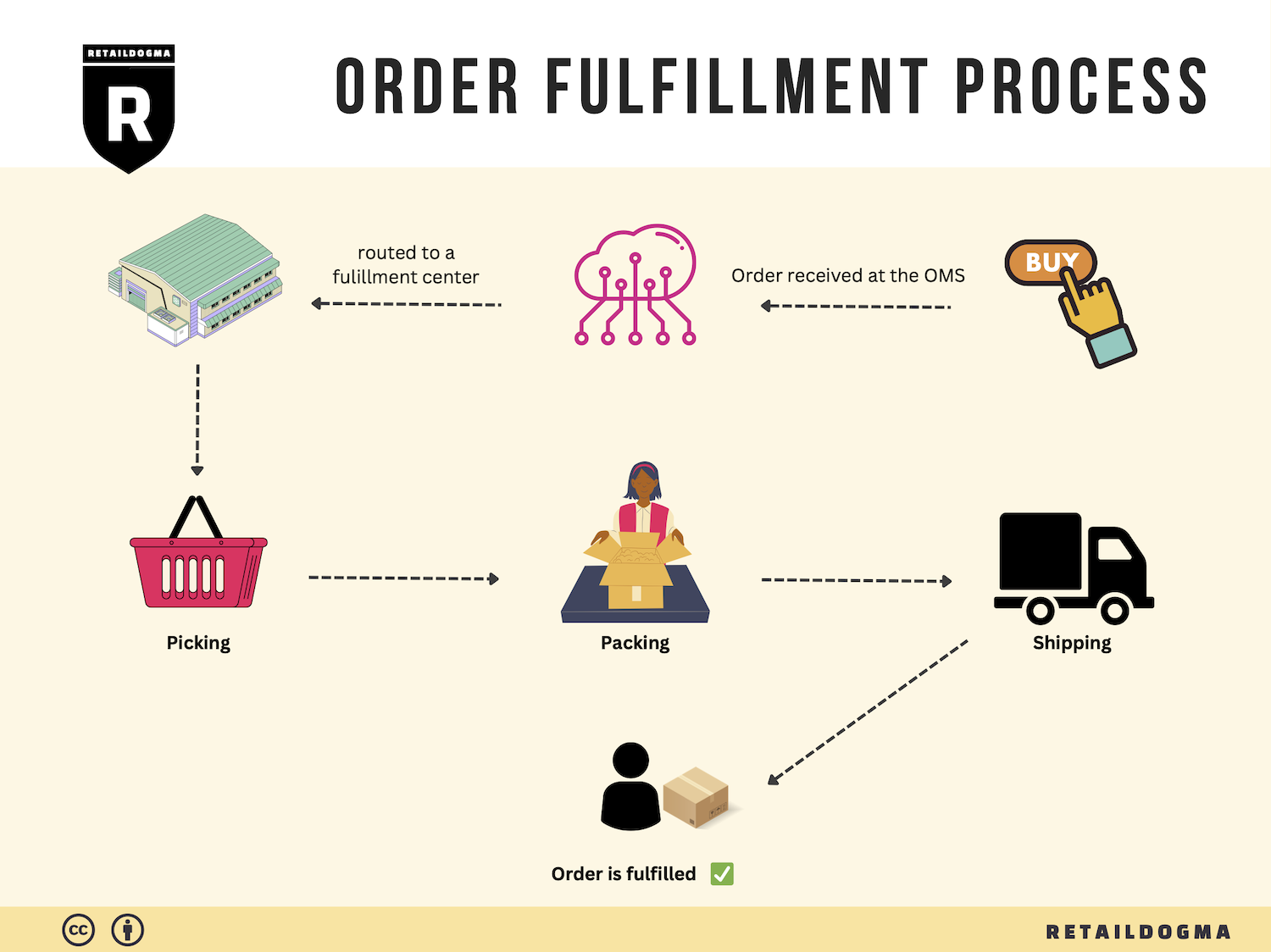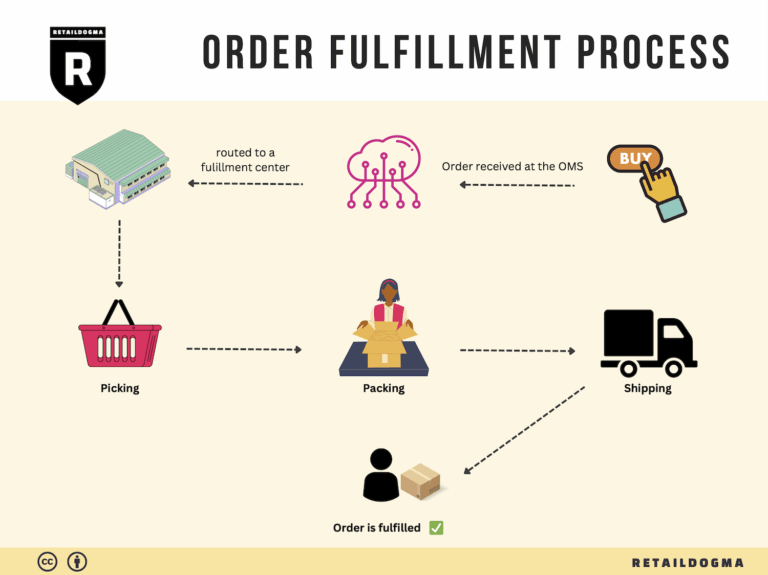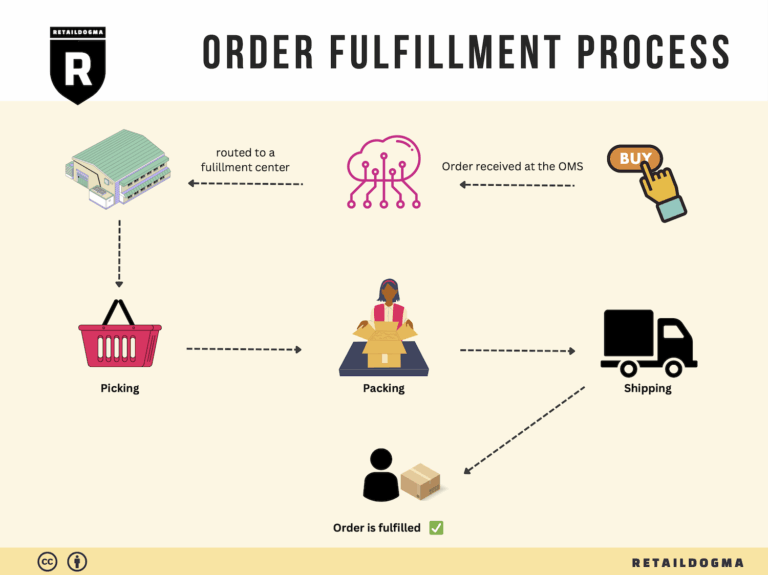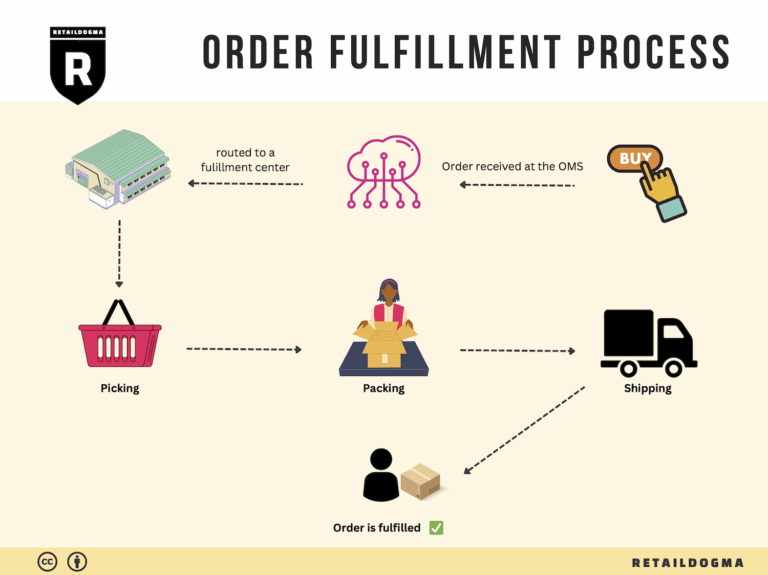Ecommerce Fulfillment Services: The Ultimate Guide (2025)
What is E-commerce Fulfillment? An Introduction for Growing Businesses
Introduction to E-commerce Fulfillment
As an e-commerce business owner, you might find yourself grappling with the overwhelming task of packing and shipping orders. The excitement of growing your sales can quickly turn into a logistical nightmare as you juggle inventory management, order processing, and customer satisfaction. This is where e-commerce fulfillment comes into play, serving as the backbone of your operations. In simple terms, fulfillment is the process of getting a product from your shelves into the hands of your customers, ensuring that every step is executed smoothly and efficiently.
In this guide, we will delve into the various aspects of e-commerce fulfillment, helping you navigate the complexities of logistics as you scale your business. We will explore different fulfillment models, such as third-party logistics (3PL) and Fulfilled by Amazon (FBA), to provide you with a clear understanding of the options available. Each model has its unique advantages and considerations, making it essential to choose the right fit for your business needs.
Additionally, we will outline the core services involved in the fulfillment process, including warehousing, inventory management, order processing, and returns management. Understanding these services will enable you to identify the specific areas where you may need assistance and how they can improve your overall operational efficiency.
Selecting the right fulfillment partner is crucial for your success. We will guide you through the key factors to consider when evaluating potential partners, including their technology capabilities, global reach, pricing structures, and customer support. A strategic partnership can significantly enhance your ability to deliver exceptional customer experiences while allowing you to focus on growing your brand.
Pricing is often a point of confusion for many businesses, so we will also demystify the various cost components associated with fulfillment services. By understanding how pricing works, you can make informed decisions that align with your budget and growth objectives.
Ultimately, the goal of this guide is to empower you to make smart, strategic decisions about your logistics operations. With the right knowledge and resources, you can streamline your fulfillment processes, enhance customer satisfaction, and position your business for sustained growth in the competitive e-commerce landscape.
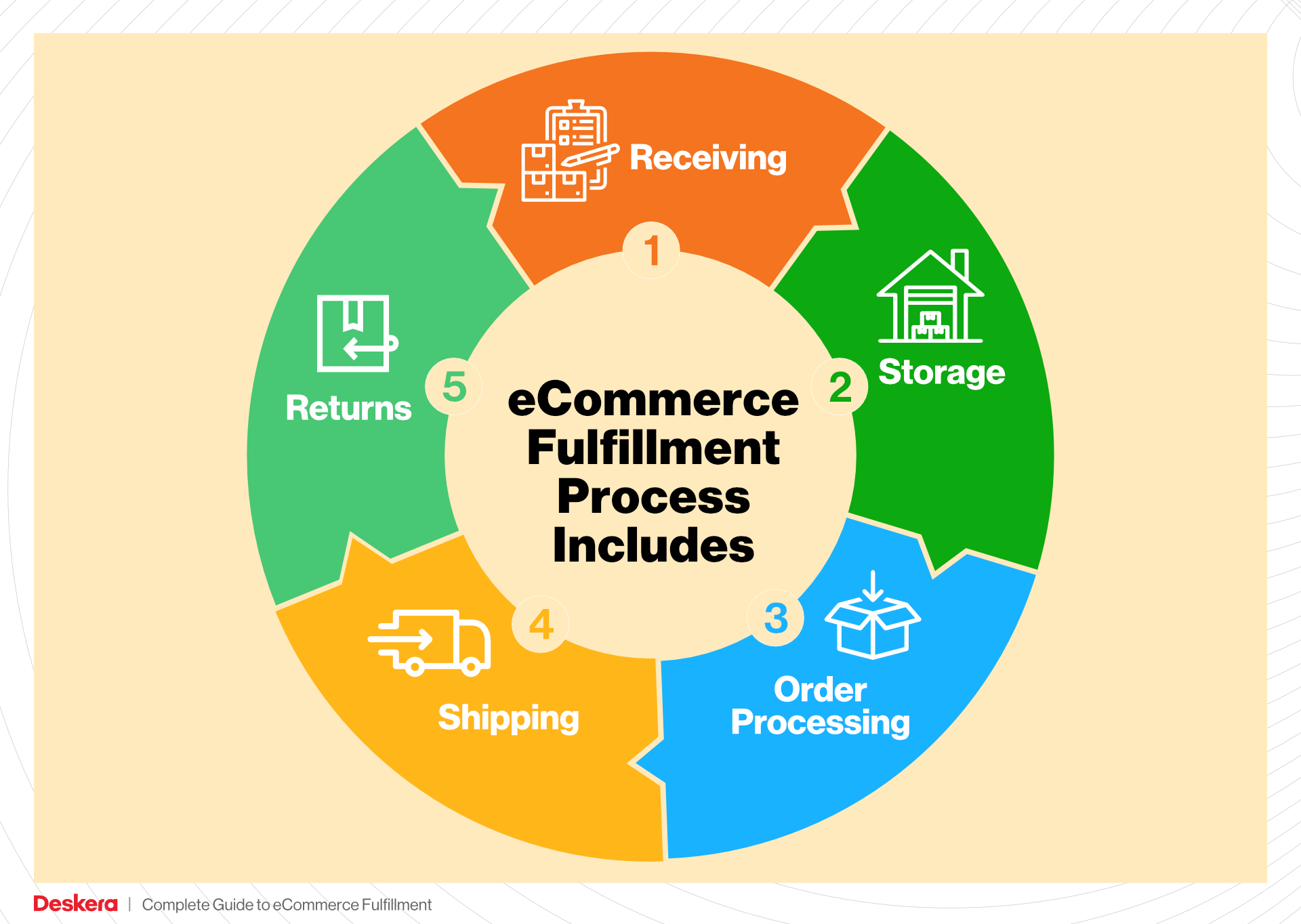
What You’ll Learn In This Guide
- What is E-commerce Fulfillment? An Introduction for Growing Businesses
- The Order Fulfillment Process: From ‘Buy’ Button to Customer’s Door
- Comparing Fulfillment Models: In-House vs. 3PL vs. Dropshipping
- A Deep Dive into Amazon FBA: Pros, Cons, and Who It’s For
- Core Services Offered by Fulfillment Centers
- How to Choose a Fulfillment Partner: A 6-Point Checklist
- Understanding Fulfillment Pricing: A Breakdown of Common Fees
- Frequently Asked Questions (FAQs) about Fulfillment
- Conclusion: Is Outsourcing Fulfillment the Right Move for Your Business?
- Important Disclaimer
The Order Fulfillment Process: From ‘Buy’ Button to Customer’s Door
1. Receiving Inventory
The order fulfillment process begins with receiving inventory at the fulfillment center. When e-commerce businesses send their products to a third-party logistics provider (3PL) like CIRRO Fulfillment, the first step is to ensure that the inventory is received correctly. Each item is checked against the shipping documents to confirm that the right quantities and products have arrived. This step is critical because it sets the foundation for all subsequent operations.
Key terms associated with this step include SKU (Stock Keeping Unit), which is a unique identifier assigned to each product. Accurate SKU management allows for efficient tracking and inventory management. Mistakes at this stage can lead to stock discrepancies, resulting in either stockouts or overstocking, which can severely impact sales and customer satisfaction.
2. Warehouse Storage
Once the inventory has been received and verified, it is stored in the fulfillment center. Efficient warehouse storage is vital for optimizing space and ensuring quick access to products when orders are placed. Products are typically organized based on various factors, including size, type, and demand.
In this stage, real-time inventory management systems come into play. These systems help businesses monitor stock levels and track product locations within the warehouse. By utilizing advanced technology, such as Automated Mobile Robots (AMRs), fulfillment centers can maximize storage efficiency and reduce retrieval times. Proper warehouse management is crucial as it directly influences order processing speed and accuracy, ultimately affecting customer satisfaction.
3. Order Picking
When a customer places an order, the next step is order picking. This process involves selecting the correct items from the warehouse to fulfill the order. A well-organized picking system is essential for maintaining high efficiency and accuracy rates. Fulfillment centers often utilize pick lists, which are documents or digital lists that indicate the items and quantities needed for a specific order.
Effective order picking strategies can significantly reduce the time it takes to retrieve products. Techniques such as batch picking (picking multiple orders simultaneously) and zone picking (assigning specific warehouse areas to different pickers) can enhance efficiency. This step is critical because any errors in picking can lead to incorrect shipments, resulting in returns and dissatisfied customers.
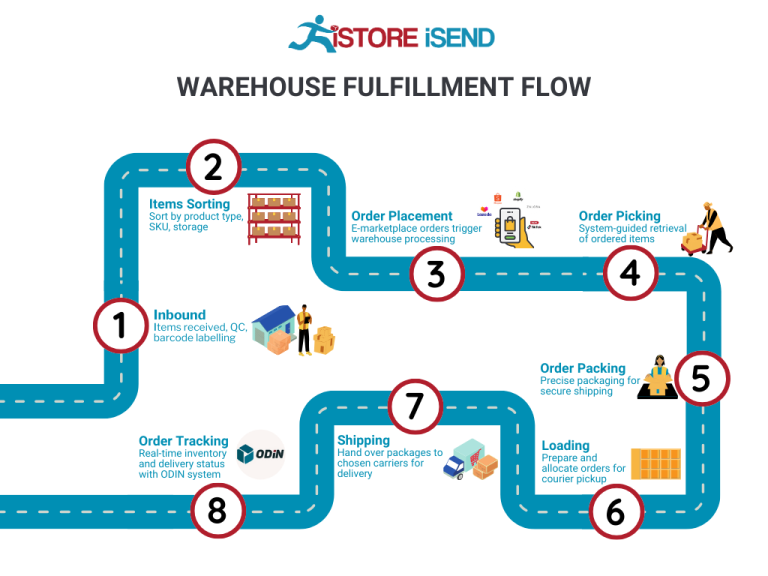
4. Order Packing
After the items have been picked, they move on to the packing stage. Here, products are carefully packaged to ensure they arrive at the customer’s doorstep in perfect condition. Packaging also plays a role in branding; businesses can use custom packaging to enhance their brand’s presence and create a memorable unboxing experience.
Key considerations during this step include packing materials and techniques to minimize shipping costs while maximizing protection. For instance, using appropriate-sized boxes and cushioning materials can prevent damage during transit. This step is crucial for maintaining product integrity and reducing return rates, which can affect a business’s bottom line.
5. Shipping & Delivery
The final step in the order fulfillment process is shipping and delivery. Once the order is packed, it is labeled for shipment and handed over to a carrier. Efficient shipping processes are critical for ensuring that customers receive their orders on time. A reliable 3PL provider like CIRRO Fulfillment often has partnerships with multiple carriers to offer various shipping options, allowing businesses to choose the best service based on cost and speed.
This stage involves tracking shipments in real-time, which is essential for providing customers with updates on their order status. Last-mile delivery is a key term here, referring to the final leg of the delivery journey from a distribution center to the customer’s doorstep. Efficient last-mile delivery can significantly enhance customer satisfaction and loyalty, making it an integral part of the overall fulfillment strategy.
In conclusion, understanding each step of the order fulfillment process—from receiving inventory to shipping and delivery—allows e-commerce businesses to streamline operations, improve accuracy, and ultimately enhance the customer experience. By leveraging advanced technology and efficient practices, businesses can scale their operations effectively while maintaining high standards of service.
Comparing Fulfillment Models: In-House vs. 3PL vs. Dropshipping
Fulfillment Model Comparison
| Model | Who Handles Inventory | Best For (Business Stage) | Key Advantage | Key Disadvantage |
|---|---|---|---|---|
| In-House Fulfillment | The business itself | Startups to Established Brands | Full control over inventory and processes | High overhead costs and resource demands |
| Third-Party Logistics (3PL) | A third-party logistics provider | Growth and Scaling Businesses | Scalability and reduced operational burden | Less control over logistics and potential hidden fees |
| Dropshipping | Suppliers | Startups and Small Businesses | Low upfront costs and minimal risk | Longer shipping times and lower margins |
In-House Fulfillment
In-house fulfillment involves managing all aspects of inventory storage, order processing, packing, and shipping within the company’s own facilities. This model allows e-commerce businesses to maintain complete control over their operations, ensuring that the quality of service meets their standards. Businesses can customize their processes, branding, and customer experience to align with their unique value propositions. This model is particularly suitable for established brands that have the resources to invest in warehousing, staff, and technology. However, the key disadvantage lies in the high overhead costs associated with staffing, maintaining a warehouse, and managing logistics. Additionally, as order volumes increase, the complexity of operations can lead to inefficiencies and potential errors if not managed effectively.
Third-Party Logistics (3PL)
Third-party logistics (3PL) providers, such as CIRRO Fulfillment, offer comprehensive logistics solutions by handling storage, order fulfillment, and shipping on behalf of e-commerce businesses. This model is particularly advantageous for companies looking to scale quickly without the heavy investment in infrastructure. With access to a network of fulfillment centers, 3PLs can optimize shipping times and reduce costs by leveraging their existing resources and expertise. Businesses can benefit from advanced technology, such as Automated Mobile Robots (AMRs) and AI-driven processes, which enhance operational efficiency. However, the trade-off is a potential loss of control over the fulfillment process. Companies may face challenges with communication, quality assurance, and transparency regarding fees. Selecting a reputable 3PL partner is critical to mitigate these risks and ensure alignment with business objectives.
Dropshipping
Dropshipping is a fulfillment model where retailers sell products without holding any inventory. Instead, when a customer makes a purchase, the retailer purchases the item from a third-party supplier who then ships it directly to the customer. This model is particularly appealing for startups and small businesses due to its low upfront costs and minimal financial risk. Entrepreneurs can test product markets without the burden of inventory management and warehousing. However, dropshipping comes with its own set of challenges. Shipping times can be longer since products are often sourced from overseas suppliers, which can affect customer satisfaction. Additionally, profit margins tend to be lower than other fulfillment models, as the retailer must pay a premium to the supplier. Reliance on suppliers for inventory and shipping can also lead to issues with stock availability and order accuracy, making it crucial for businesses to choose reliable partners.
In conclusion, the choice of fulfillment model depends on various factors including business stage, resource availability, and growth objectives. Each model offers unique advantages and disadvantages that need to be carefully considered to align with the overall business strategy. For e-commerce businesses looking to scale effectively, understanding these models and their implications is essential for optimizing operations and enhancing customer satisfaction.
A Deep Dive into Amazon FBA: Pros, Cons, and Who It’s For
Understanding Fulfillment by Amazon (FBA)
Fulfillment by Amazon (FBA) is a service provided by Amazon that allows e-commerce sellers to store their products in Amazon’s fulfillment centers. Amazon then takes care of storage, packaging, and shipping of the products directly to customers. This service is designed to simplify the logistics of online selling, allowing sellers to focus on growing their businesses while leveraging Amazon’s extensive distribution network and customer base.
How FBA Works
-
Product Listing: Sellers create product listings on Amazon and set their inventory to FBA.
-
Shipping Inventory: Sellers ship their products to Amazon’s fulfillment centers. Amazon provides guidelines on how to prepare and package products for shipment.
-
Storage: Once received, Amazon stores the products in their warehouses. Sellers have real-time access to inventory levels through their Amazon Seller Central account.
-
Order Processing: When a customer places an order, Amazon picks, packs, and ships the product on behalf of the seller. They also handle customer service and returns.
-
Delivery: Products are shipped using Amazon’s logistics network, often resulting in faster delivery times, including options for same-day or two-day shipping.
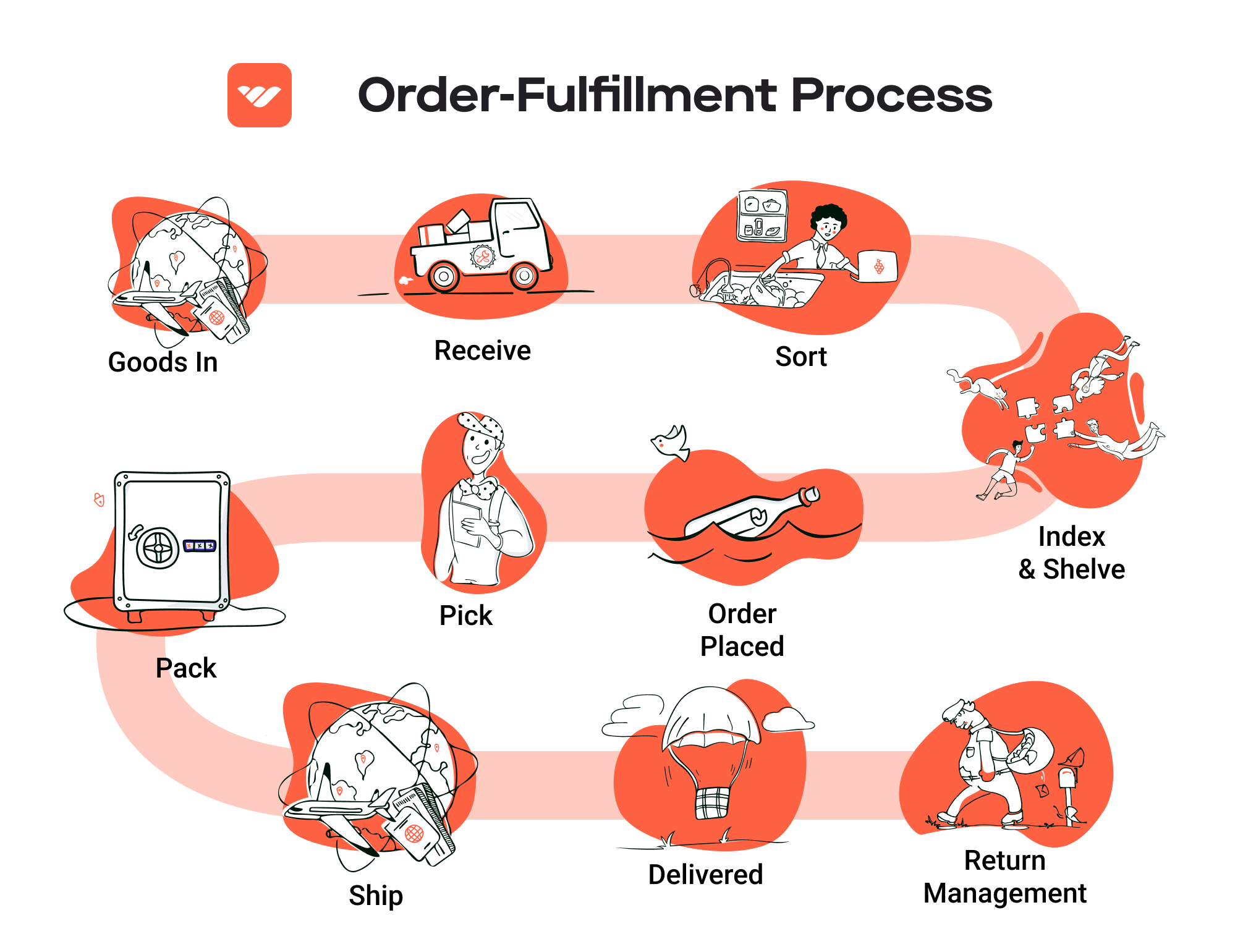
-
Fees: Sellers incur various fees for using FBA, including storage fees for inventory and fulfillment fees for each order processed.
Pros of Using FBA
1. Prime Eligibility
Products fulfilled by Amazon are eligible for Amazon Prime, which is a significant advantage. Prime members often prefer purchasing products that offer free two-day shipping, leading to higher conversion rates for sellers using FBA.
2. Customer Trust
Amazon is a globally recognized brand, and customers often trust products that are fulfilled by Amazon. This trust can translate into increased sales, as customers feel more secure purchasing from sellers who utilize Amazon’s reliable fulfillment services.
3. Multi-Channel Fulfillment
FBA isn’t limited to sales on Amazon alone. Sellers can use FBA to fulfill orders from other sales channels, including their own websites, eBay, and Walmart. This flexibility allows sellers to streamline their fulfillment processes across multiple platforms while taking advantage of Amazon’s logistics.
4. Simplified Logistics
By outsourcing fulfillment to Amazon, sellers can focus on other aspects of their business, such as marketing and product development. Amazon handles the complexities of logistics, including inventory management, shipping, and returns.
5. Access to Advanced Tools
Sellers using FBA gain access to Amazon’s advanced tools and analytics. These tools can help optimize inventory levels, track sales trends, and improve overall operational efficiency.
Cons of Using FBA
1. High Fees
One of the most significant drawbacks of FBA is the cost. Sellers must pay storage fees for their products, which can add up quickly, especially for items that don’t sell as fast. Additionally, fulfillment fees are charged per item shipped, and these can vary based on size and weight.
2. Strict Inventory Rules
Amazon has strict guidelines regarding inventory management. Sellers must ensure that their products comply with Amazon’s requirements, including labeling, packaging, and inventory limits. Non-compliance can result in additional fees or even account suspension.
3. Commingling Risks
FBA utilizes a commingling system where products from different sellers are stored together. This can lead to issues if a customer receives a product that is defective or not in the condition expected. Sellers may struggle to manage customer returns or complaints, as they cannot guarantee the quality of commingled items.
4. Limited Control Over Shipping
While FBA provides a streamlined process, sellers lose some control over the shipping process. Amazon’s logistics system determines how and when products are shipped, which may not always align with the seller’s preferences or customer expectations.
5. Dependency on Amazon
Using FBA means becoming reliant on Amazon’s platform and policies. Any changes in Amazon’s rules, fees, or service can directly impact a seller’s business operations and profitability.
Who is FBA Best For?
Fulfillment by Amazon is particularly well-suited for:
-
Small to Medium-Sized Businesses: Sellers who want to leverage Amazon’s massive infrastructure without investing heavily in their own logistics.
-
New Sellers: Entrepreneurs entering the e-commerce space can benefit from the trust associated with Amazon and the simplicity of FBA, allowing them to focus on sales and marketing.
-
Brands with High Sales Volume: Established brands that already have a steady sales volume can take advantage of FBA to streamline their logistics and reach Prime customers.
-
Sellers with Diverse Product Lines: Businesses offering a wide range of products can utilize FBA to manage inventory and fulfillment across various categories efficiently.
-
Multi-Channel Sellers: Those selling on multiple platforms can benefit from FBA’s multi-channel fulfillment capabilities, simplifying their operations and logistics.
In conclusion, Fulfillment by Amazon offers a powerful solution for e-commerce sellers looking to scale their operations and enhance customer satisfaction. However, it’s essential to weigh the pros and cons carefully, considering the specific needs and circumstances of your business before committing to FBA.
Core Services Offered by Fulfillment Centers
Inventory Management & Warehousing
Inventory management and warehousing are foundational services provided by fulfillment centers. This service involves the systematic handling of goods and materials, encompassing everything from receiving and storing products to tracking inventory levels and managing stock movements.
Benefits for E-Commerce Businesses:
1. Real-Time Visibility: Advanced inventory management systems offer real-time tracking of stock levels, allowing e-commerce businesses to avoid stockouts and overstocking situations. This visibility is crucial for maintaining optimal inventory levels, which directly impacts cash flow and operational efficiency.
-
Strategic Storage Solutions: Fulfillment centers are equipped with strategically located warehouses that minimize shipping costs and transit times. By housing inventory closer to key customer markets, businesses can enhance delivery speed, which is increasingly important in today’s competitive e-commerce landscape.
-
Scalability: As your business grows, so do your inventory needs. Fulfillment centers provide scalable warehousing solutions that can easily adapt to fluctuations in demand, whether during peak seasons or as a result of marketing campaigns.
-
Reduced Overhead Costs: Outsourcing inventory management and warehousing to a fulfillment center eliminates the need for businesses to invest in their own warehouse space, technology, and staff, thus reducing overhead costs and allowing them to focus resources on core business activities.
Pick and Pack Services
Pick and pack services are critical to the order fulfillment process. This service involves selecting the right products from inventory, packing them securely, and preparing them for shipment to customers.
Benefits for E-Commerce Businesses:
1. Efficiency and Speed: Fulfillment centers utilize advanced technology, such as Automated Mobile Robots (AMRs) and optimized picking processes, to ensure rapid order processing. This means orders can be fulfilled quickly, often on the same day, which enhances customer satisfaction and loyalty.
-
Accuracy: High pick accuracy rates, often upwards of 99%, are essential for reducing errors in order fulfillment. A reliable pick and pack service minimizes the risk of shipping incorrect items, which can lead to costly returns and customer dissatisfaction.
-
Customization: Many fulfillment centers offer customizable packing options, including branded packaging and promotional inserts. This capability allows e-commerce businesses to enhance their brand identity and create memorable unboxing experiences for customers.
-
Streamlined Operations: By outsourcing pick and pack services, businesses can streamline their operations, freeing up internal resources to focus on sales, marketing, and product development rather than logistical complexities.
Kitting and Assembly
Kitting and assembly refer to the process of grouping individual items together to create a single product offering or kit. This service is particularly useful for businesses that sell products that are often purchased together or require assembly before they can be shipped.
Benefits for E-Commerce Businesses:
1. Enhanced Product Offerings: Kitting allows businesses to create bundled products that can attract customers looking for convenience. For example, a skincare brand might offer a bundle that includes a cleanser, toner, and moisturizer at a discounted price.
-
Improved Efficiency: By having fulfillment centers handle kitting and assembly, e-commerce businesses can reduce the time and labor costs associated with preparing products for shipment. This efficiency can significantly speed up the order fulfillment process.
-
Inventory Management Simplification: Kitting can simplify inventory management by reducing the number of SKUs that need to be tracked. Instead of managing individual components, businesses can manage kits as single products, which can simplify forecasting and stock control.
-
Increased Sales Opportunities: Offering kits can lead to higher average order values. Customers are often more inclined to purchase a bundled offering, thus increasing overall sales and enhancing customer satisfaction.
Returns Management (Reverse Logistics)
Returns management, or reverse logistics, is the process of handling returned products from customers. This service is crucial in e-commerce, where return rates can be significantly higher than in traditional retail.
Benefits for E-Commerce Businesses:
1. Streamlined Returns Process: Fulfillment centers typically have established protocols for handling returns, including inspection, restocking, and processing refunds. This streamlining can greatly reduce the time and effort required to manage returns, improving operational efficiency.
-
Customer Satisfaction: A seamless returns experience is essential for maintaining customer loyalty. Fulfillment centers provide efficient returns management solutions that make it easy for customers to return items, thus enhancing their overall shopping experience.
-
Data Insights: Returns management services can provide valuable insights into return reasons and trends. E-commerce businesses can use this data to identify potential issues with products or shipping methods, leading to improvements in product quality and fulfillment processes.
-
Cost Management: Effective returns management can help mitigate losses associated with returned goods. By efficiently processing returns and reselling items when possible, fulfillment centers can help businesses recover costs and maintain profitability.
In summary, the core services offered by fulfillment centers—inventory management and warehousing, pick and pack services, kitting and assembly, and returns management—play a vital role in the success of e-commerce businesses. By leveraging these services, businesses can enhance their operational efficiency, improve customer satisfaction, and ultimately drive growth in a competitive marketplace.
How to Choose a Fulfillment Partner: A 6-Point Checklist
Location & Warehouse Network
Choosing a fulfillment partner with an optimal location and an extensive warehouse network is crucial for ensuring fast and cost-effective shipping. A partner with strategically placed warehouses can minimize shipping times and reduce costs, especially for businesses looking to expand their reach.
Questions to Ask:
– How many fulfillment centers do you operate, and where are they located?
– What is your average shipping time to key markets?
– Can you accommodate international shipping, and what are the associated costs?
Technology & Integrations
In today’s e-commerce landscape, advanced technology is a game-changer. A fulfillment partner should offer robust technology solutions that integrate seamlessly with your existing systems, providing real-time visibility into inventory levels, order tracking, and performance metrics. This not only enhances operational efficiency but also improves customer satisfaction.
Questions to Ask:
– What technology platforms do you use for order management and inventory tracking?
– How do you ensure data security and compliance with regulations?
– Can your systems integrate with my existing e-commerce platforms (e.g., Shopify, WooCommerce, etc.)?
Specializations (e.g., Cold Storage, Oversized Items)
Different businesses have unique needs when it comes to storage and fulfillment. If your products require specialized handling—such as cold storage for perishables or specific accommodations for oversized items—it’s essential to find a partner who can meet those requirements.
Questions to Ask:
– Do you have experience handling products like mine (e.g., fragile items, perishables)?
– What specialized services do you offer (e.g., cold storage, hazardous materials)?
– How do you manage compliance with industry regulations related to my product type?
Scalability & Capacity
As your business grows, your fulfillment needs will evolve. Selecting a partner that can scale with your operations is vital for managing fluctuations in order volume, especially during peak seasons or promotional campaigns. A partner with a scalable solution can help you avoid operational bottlenecks and maintain service quality.
Questions to Ask:
– What is your capacity for order fulfillment, and how do you handle seasonal spikes?
– Can you accommodate rapid growth, and what is your process for scaling operations?
– What guarantees do you offer regarding order accuracy and on-time delivery during peak periods?
Pricing and Contracts
Understanding the pricing structure and contract terms is essential for budgeting and financial planning. A transparent pricing model helps avoid unexpected costs and ensures that you can make informed decisions about your logistics expenses.
Questions to Ask:
– What is your pricing structure (e.g., pick and pack fees, storage fees, shipping costs)?
– Are there any hidden fees or additional costs I should be aware of?
– What are the terms of the contract, and what is the process for renegotiation if our needs change?
Customer Support & Reviews
Exceptional customer support can significantly influence your fulfillment experience. A responsive partner can quickly resolve issues, provide insights into performance, and assist in optimizing your logistics strategy. Additionally, checking customer reviews and testimonials can provide valuable insights into a partner’s reliability and service quality.
Questions to Ask:
– What kind of customer support do you provide (e.g., dedicated account managers, 24/7 support)?
– Can you share case studies or testimonials from businesses similar to mine?
– How do you handle disputes or service issues, and what is your escalation process?
Conclusion
Selecting the right fulfillment partner is a critical decision that can impact your e-commerce operations significantly. By following this checklist, you can evaluate potential partners effectively, ensuring they align with your business needs and growth objectives. Remember that a strong partnership can not only streamline your logistics but also enhance customer satisfaction, allowing you to focus on scaling your business successfully.
Understanding Fulfillment Pricing: A Breakdown of Common Fees
Initial Setup Fees
Initial setup fees are typically charged when you first start using a fulfillment service. These fees can cover a range of costs associated with integrating your business systems with the fulfillment provider’s systems. This may include technology integration, account setup, and onboarding processes.
The calculation of these fees can vary widely among providers. For instance, some might charge a flat rate for setup, while others might base it on the complexity of your integration needs. It’s crucial to clarify with your provider what specific services are included in these fees to avoid unexpected costs.
Receiving Fees
Receiving fees apply when your inventory arrives at the fulfillment center. These fees are incurred for the labor and resources used to unload, inspect, and store your products. Generally, this fee is calculated based on the number of pallets or units received. For example, a provider may charge a per-pallet fee or a fee per hour spent handling your goods.
To manage costs effectively, ensure that your shipments are well-organized and labeled, as this can reduce handling time and associated fees. Furthermore, understanding the provider’s specific receiving processes can help you better prepare your shipments and potentially reduce these costs.
Storage Fees (per pallet/bin)
Storage fees are charged for the space your inventory occupies in the fulfillment center. These fees can be calculated per pallet or per bin, depending on how your products are stored. For instance, you might see fees like $X per pallet per month.
These fees can vary based on the location of the fulfillment center and the time of year, with higher rates often seen during peak seasons when storage space is at a premium. To optimize storage costs, consider strategies like just-in-time inventory management, which can help minimize the amount of stock held at the fulfillment center.
Pick & Pack Fees (per item/order)
Pick and pack fees are charged each time an order is processed. This includes picking items from storage, packing them for shipment, and preparing them for delivery. The fees can vary based on the complexity of the order, such as the number of items included and whether any special packing requirements are needed.
Typically, providers charge a base fee for the first item and an additional fee for each subsequent item. For example, you might see a structure where the first item costs $0.65 to pick and pack, with an additional $0.35 for each extra item in the same order. To control these costs, you can streamline your product offerings or consider bulk orders, which can help reduce the number of separate shipments.
Shipping Fees
Shipping fees encompass the costs associated with transporting your products from the fulfillment center to your customers. These fees can be influenced by various factors, including the shipping method (ground, air, etc.), package dimensions, weight, and destination.
Many fulfillment providers offer competitive shipping rates due to their volume, which can benefit your business. It’s essential to understand how these shipping fees are calculated, as providers may have different pricing models, such as flat-rate shipping, weight-based pricing, or distance-based pricing. Additionally, keep an eye on any potential surcharges that may apply during peak seasons or for specific delivery options.
Tips for Getting an Accurate Quote
To ensure you receive an accurate quote from a fulfillment provider, consider the following steps:
-
Provide Detailed Information: Clearly outline your product types, average order size, monthly order volume, and any special handling requirements. The more information you provide, the more tailored the quote will be.
-
Ask About All Fees: Inquire about all potential fees, including hidden costs that may arise during peak seasons, such as additional storage fees or surcharges for expedited shipping.
-
Review Pricing Models: Understand the pricing structure for each fee type. Ask for examples or scenarios to clarify how fees will apply based on your business’s specific needs.
-
Negotiate Terms: Don’t hesitate to negotiate terms with your fulfillment provider. Many providers are open to adjusting pricing based on volume commitments or long-term contracts.
-
Request a Trial Period: If possible, ask for a trial period or pilot program to assess the provider’s services and pricing before committing to a long-term contract.
By taking these steps, you can ensure that you receive a comprehensive and accurate quote that reflects your business’s unique requirements, helping you make informed decisions as you scale your e-commerce operations.
Frequently Asked Questions (FAQs) about Fulfillment
1. What is CIRRO Fulfillment?
CIRRO Fulfillment is a third-party logistics (3PL) provider that specializes in e-commerce order fulfillment. It offers comprehensive services, including inventory management, order processing, and global shipping, designed to streamline logistics for e-commerce businesses of all sizes.
2. How does CIRRO Fulfillment work?
CIRRO Fulfillment operates through a four-step process:
1. Send Your Inventory: Ship your products to one of CIRRO’s fulfillment centers.
2. Store and Track: Your inventory is stored securely with real-time visibility.
3. Pick, Pack, and Ship: Orders are picked, packed, and shipped with precision.
4. Manage and Optimize: Utilize advanced technology for performance monitoring and inventory optimization.
3. What is the difference between a warehouse and a fulfillment center?
A warehouse is primarily used for storing goods, while a fulfillment center is designed specifically for processing and shipping orders. Fulfillment centers often include advanced technology for order management and inventory tracking, and they focus on fast and accurate order delivery.
4. What is a 3PL?
A 3PL, or third-party logistics provider, is a company that offers outsourced logistics services, including warehousing, order fulfillment, shipping, and returns management. Utilizing a 3PL allows businesses to focus on their core activities while leveraging the provider’s expertise in logistics.
5. How much do fulfillment services cost?
Fulfillment service costs can vary based on factors like order volume, storage needs, and shipping destinations. CIRRO Fulfillment offers transparent pricing with no hidden fees, allowing businesses to easily understand their costs. For specific quotes, it’s best to contact CIRRO directly.
6. What types of businesses can benefit from CIRRO Fulfillment?
CIRRO Fulfillment caters to a wide range of e-commerce businesses, from startups to established brands. It supports various sales channels, including direct-to-consumer (D2C), marketplace selling (e.g., Amazon), and subscription box services.
7. How quickly can CIRRO Fulfillment ship orders?
CIRRO Fulfillment guarantees same-day shipping for orders placed by 3 PM, ensuring that your customers receive their products quickly and efficiently.
8. Can CIRRO Fulfillment handle seasonal spikes in order volume?
Yes, CIRRO Fulfillment is designed to scale with your business. Whether you’re fulfilling hundreds or thousands of orders during peak seasons, CIRRO can manage surges efficiently while maintaining high accuracy rates.
9. What technology does CIRRO Fulfillment use?
CIRRO utilizes state-of-the-art technology, including Automated Mobile Robots (AMRs) and AI-driven systems, to enhance order accuracy, streamline workflows, and provide real-time inventory tracking.
10. How can I get started with CIRRO Fulfillment?
To start using CIRRO Fulfillment, you can visit their website and request a quote. Their team will guide you through the onboarding process, helping you set up your inventory and fulfillment operations tailored to your business needs.
Conclusion: Is Outsourcing Fulfillment the Right Move for Your Business?
Key Benefits of Outsourcing Fulfillment
Outsourcing fulfillment can be a transformative decision for e-commerce businesses aiming to scale effectively. One of the most significant advantages is time savings. By delegating logistics to a specialized partner like CIRRO Fulfillment, you free up valuable resources, allowing your team to focus on core business activities such as marketing, product development, and customer engagement. This shift not only enhances productivity but also accelerates growth.
Another critical benefit is scalability. As your business experiences fluctuations in order volume—whether due to seasonal trends or successful marketing campaigns—an experienced fulfillment partner can seamlessly adjust to your needs. With capabilities to handle everything from hundreds to thousands of orders per day, outsourcing ensures you can meet customer expectations without the stress of managing logistics alone.
Additionally, leveraging a fulfillment service provides access to expertise in logistics management. Third-party logistics providers bring advanced technologies, industry best practices, and comprehensive knowledge of global shipping networks. This expertise translates into improved accuracy in order fulfillment, faster shipping times, and enhanced customer satisfaction.
Choosing the Right Partner for Growth
Selecting the right fulfillment partner is crucial for your business’s success. Not all providers are created equal; it’s essential to assess their capabilities, technology, and customer support to ensure they align with your business goals. A strong partnership can lead to significant operational efficiencies and a competitive edge in the marketplace.
Call to Action
Take a moment to audit your current shipping process. Are you facing challenges with order accuracy, shipping times, or managing peak seasons? If so, it may be time to consider a fulfillment partner. Evaluate how outsourcing could optimize your operations and drive growth. Reach out to a trusted provider like CIRRO Fulfillment to discuss your specific needs and explore how they can support your journey to success.
Important Disclaimer
⚠️ Important Disclaimer
The information in this guide is for educational purposes. Fulfillment services, pricing, and platform features change frequently. Always conduct your own due diligence and consult with providers directly before making business decisions.
